This article is written by Michael Shriney from the Sathyabama Institute of Science and Technology and has been further updated by Sakshi Kuthari. The article gives an outline of the Motor Vehicle Act, 1988. It discusses in detail the essential aspects, offences, amendments, claims tribunal and compensation. The changes done by the legislature in the (Amendment) Act, 2019 are also included. Some provisions have been completely repealed and some have been added or varied from the Motor Vehicle Act, 1988 . It also includes the Supreme Court judgements, information on the Central Motor Vehicle Act of 2019, and Motor Vehicle Rules of 1989 and 2022.
Table of Contents
Introduction
The Motor Vehicle Act of 1988 (hereinafter referred to as the Act of 1988) regulates all the essential components of road transport vehicles. It took effect on July 1, 1989, covering various laws relating to traffic laws, vehicle insurance, motor vehicle registration, controlling permits, and penalties. For the purpose of ensuring and enhancing road safety, the Government of India, in consultation with the State Transport Ministers, came up with this Motor Vehicle (Amendment) Bill, 2017 to make amendments to the Motor Vehicle Act, 1988. This Bill was introduced by the Minister for Road Transport and Highways, Mr. Nitin Gadkari, on 15 July, 2019. It dealt with the issuance of licences and permits related to motor vehicles, established standards for motor vehicles, and imposed penalties for violations of these provisions. The Bill became law after receiving the President’s assent on 01 September, 2019.
There is a mandate under Section 3 of the Act of 1988 that all drivers must have a valid driving licence, and no vehicle can be driven unless it is registered under the Motor Vehicle Act, 1988. The Preamble of the Act aims to integrate and update motor vehicle legislation, requiring all drivers and conductors to obtain a licence and then drive a vehicle. Section 41(7) of the Motor Vehicles (Amendment) Act, 2019 (hereinafter referred to as the Act of 2019) provides that a vehicle’s registration certificate is valid for a time period of fifteen years from the date of registration and can be renewed.
This article gives an outline of the Act of 1988, it’s important amendments, relevant and recent Supreme Court judgements, the New Amendment Act and Rules, important provisions of the Act, penalties under the Motor Vehicle Act and the differences between the Act of 1988 and the Act of 2019. Let us discuss each aspect of this Act in detail below:
An overview of Motor Vehicle Act, 1988
The Motor Vehicle Act comes within the ambit of the law of torts. The law of torts is based on the Latin maxim ubi jus, ibi-remedium, i.e., where there is a right, there is a remedy. This maxim brings into play the concepts of damage and compensation. At this point, the idea of compensating and giving damages comes into action. The Motor Vehicle Act, 1988, is considered a law of welfare aiming to provide relief to those injured in an accident. While the Motor Vehicle Act of 1939 initially consolidated all motor vehicle legislations, it required frequent amendments to stay updated. With the progression of advancements in road transport technology, the expansion of the road network, and changes in passenger transport patterns, a comprehensive revision of the Act became necessary to address new developments related to motor vehicles and its rules and regulations.
The main objective of the Act of 1988 is to provide relief to innocent road users who often, through no fault of their own, become victims of accidents and struggle to receive the compensation they deserve. Under this Act, beyond the laws relating to licensing and registration, various other aspects of road transport vehicles are also covered.
Motor insurance is one of the most important mandatory laws. The motor vehicle should at least have third-party insurance in order to register and drive a vehicle on Indian roads. The Act of 2019 introduces stricter penalties for driving a vehicle without a licence, including a fine of Rupees Two Thousand, three months of imprisonment, and community service for first-time offenders, and a fine of Rupees Four Thousand for repeated offenders.
Objectives of Motor Vehicle Act, 1988
The Act of 1988 was passed for the purpose of solving the most prominent issues mentioned below:
- Implementing strict procedures for issuing licences and determining their validity period;
- Ensuring road safety by regulating the transportation of hazardous and explosive materials and enforcing pollution control measures;
- Manage the rapid increase in the number of personal and commercial vehicles in the country;
- Increase the amount of compensation available to the victims of hit-and-run accidents;
- Remove the time limit for traffic accident victims to file compensation claims.
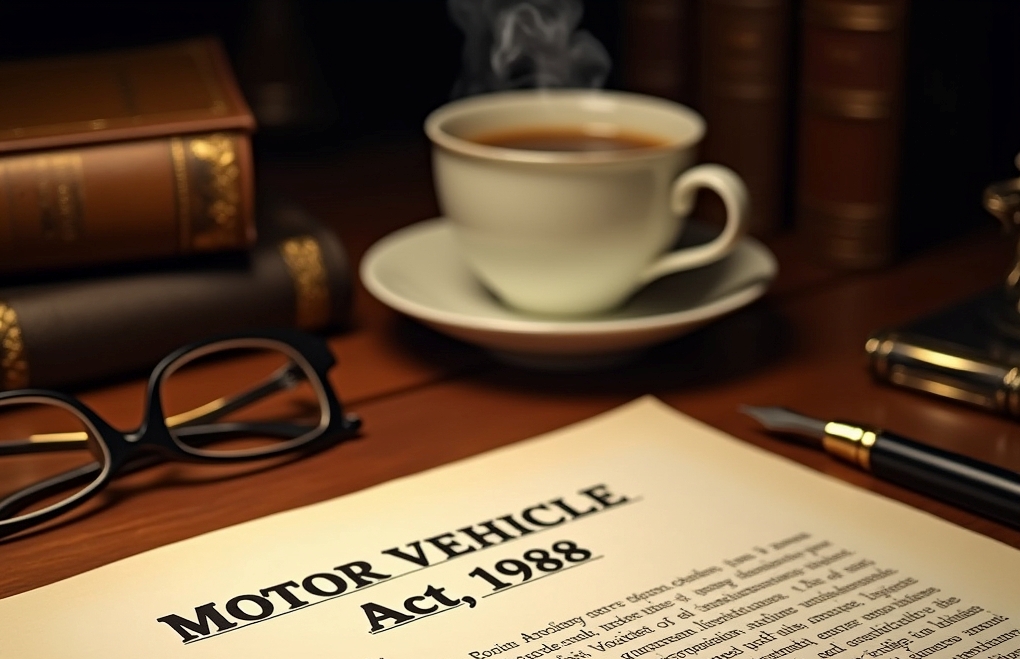
Offences covered under the Act
The original Motor Vehicle Act covers the following offences:
- Driving a vehicle without a licence;
- Vehicle owner allowing a person to drive a motor vehicle not possessing a driving licence;
- Failing to carry all necessary documentation required to drive a motor vehicle on Indian roads;
- Driving without a permit when required,
- Driving without a vehicle fitness certificate;
- Driving without a registration certificate (R.C.);
- Minor driving a motor vehicle,
- Permitting an unauthorised individual to drive a motor vehicle,
- Driving a motor vehicle without a helmet,
- Driving without fastening the seat belt of the driver seat;
- Exceeding the prescribed speed limit and involving in rash driving;
- Risky driving;
- Driving against the flow of traffic in a one-way lane; and
- Other violations that are considered as offences under the Act.
Important Sections of Motor Vehicle Act, 1988
The following are some of the most important provisions of the Act of 1988:
Essential requirement of a driving licence
Section 3 of the Act of 1988 addresses the necessity of carrying a driving licence. It states that-
- A person cannot drive a vehicle in a public place until and unless they possess a valid and authorised driving licence. Additionally, they are not permitted to operate any transport vehicle, except for a motor-taxi or a motor bike for personal use or rental under any scheme, unless their driving licence specifically authorised them to do so.
- These requirements apply to an individual who operates a motor vehicle in India unless specified by the Central Government.
Age restrictions related to driving of motor vehicles
Section 4 of the Act of 1988 deals with the age limitations for driving motor vehicles. It states that-
- No individual below the age of 18 years is allowed to operate a motor vehicle in public. However, any individual who reaches the age of 16 years or older is allowed to drive a motor vehicle with an engine capacity of less than 50cc.
- No individual under the age of 20 years is allowed to drive a public transportation vehicle.
- No individual shall be granted a learner’s or permanent driving licence for a specific class of motor vehicle unless they meet the requisite qualifications to drive that class of vehicle.
Responsibility of motor vehicle owners for violations of Sections 3 and 4
Under Section 5 of the Act of 1988, it is provided that no owner or person in charge of a motor vehicle shall allow anyone who does not meet the requirements of sections 3 or 4 to drive the motor vehicle.
Restrictions on holding driving licences
Section 6(1) of the Act of 1988 provides that no individual shall hold a driving licence while a valid licence is in effect, except for a learner’s licence.
Section 6(2) of the said Act provides that the holder of a driving licence or learner’s licence shall not allow it to be used by anyone else.
Section 6(3) of the said Act provides that nothing in this section shall prevent a licensing authority, as specified in subsection (1) of Section 9 of the said Act, from expanding the classes of vehicles that the driving licence permits the holder to drive.
Restriction on issuing learner’s licence for certain types of vehicles
Section 7(1) of the Act of 1988 provides that no individual shall be granted a learner’s licence to drive a transport vehicle unless they have held a driving licence for a light motor vehicle for at least a period of one year. This subsection shall not apply to e-carts or e-rickshaws.
Section 7(2) of the said Act provides that no individual under the age of eighteen years shall be issued a learner’s licence to drive a motorcycle without gear unless they have written consent from their guardian.
Necessity for registration
Section 39 of the Act of 1988 provides the necessity for motor vehicle registration, stating that no person is allowed to drive a motor vehicle in a public place, and no owner should permit or allow the motor vehicle to be driven shall in a public place by another person, unless it is registered and the vehicle’s registration certificate of registration has not been suspended temporarily or cancelled permanently.
Where registration should be made
Under Section 40 of the Act of 1988, it is provided that, in accordance with the provisions of Sections 42, 43, and 60, it is the duty of every owner of a motor vehicle to register his or her vehicle. It is to be done by any registering authority in the State that has jurisdiction over their residence or place of business where the vehicle is primarily kept.
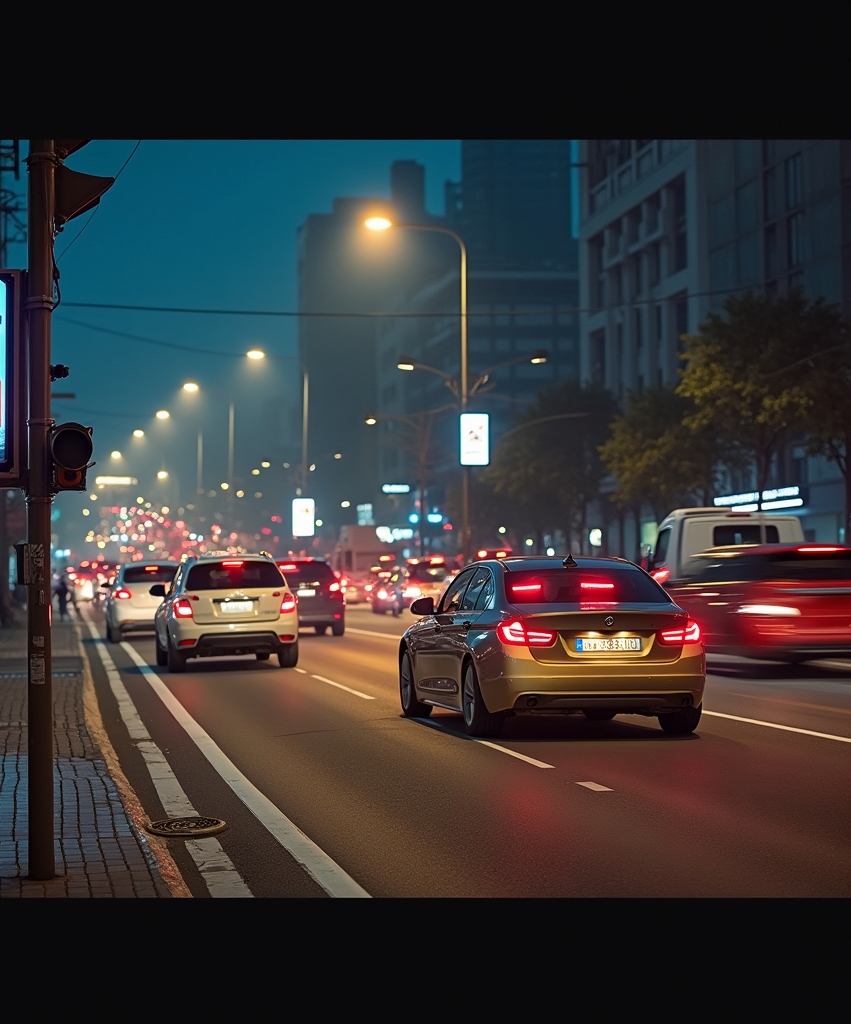
How registration should be made
Section 41(1) of the Act of 1988 provides that an application for the registration of a motor vehicle should be submitted by or on behalf of the owner. It must be in the prescribed form and include the required documents, details, and information within the timeframe set by the Central Government.
First proviso of this subsection provides that in cases where a motor vehicle is owned jointly by several people, the application must be submitted by any one co-owner on behalf of all, and that individual will be regarded as the owner for the purposes of the said Act.
The second proviso provides that if there is a new motor vehicle, the registration application must be submitted by the dealer if the vehicle is being registered in the same State where the dealer is located.
Section 41(2) provides that, along with the application of sub-section (1) of Section 41, the prescribed fees must be paid as set by the Central Government.
Certificate of registration: Section 41(3) provides that the registering authority shall issue a certificate of registration in the name of the owner, in a format and containing the details as prescribed by the Central Government.
Section 41(4) provides that in addition to the required details in the certificate of registration, it must also indicate the type of motor vehicle based on its design, construction, and use.
Section 41(5) provides that the registering authority shall record the details of the certificate mentioned in subsection (3) of Section 41. The register is maintained in the format and manner prescribed by the Central Government.
Registration mark: Section 41(6) provides that the registering authority shall assign a distinguishing mark to the vehicle, referred to in the said Act as the registration mark. This mark shall have a set of letters and will be followed by specific letters and numbers allocated to the State by the Central Government through notifications in the Official Gazette. The registration mark must be displayed on the motor vehicle in the format and manner prescribed by the Central Government. The proviso to this subsection provides that for a new motor vehicle, for which registration is applied under the second proviso to subsection (1), the vehicle shall not be delivered to the owner until the registration mark is displayed in the prescribed format and manner.
Validity of certificate of registration: Section 41(7) provides that a certificate of registration issued under subsection (3) of Section 41, whether before or after the commencement of the said Act, for a motor vehicle shall be valid for a period of fifteen years from the date of issue of the registration certificate, subject to the provisions of this Act. The registration certificate may be renewed for such a duration as prescribed by the Central Government.
Renewal of certificate: Section 41(8) provides that an application for the renewal of a certificate of registration, submitted by or on behalf of the vehicle owner, must be made within the prescribed time limit and in the prescribed format, including the required details and information as set by the Central Government.
Section 41(9) of the said Act provides that application of registration certificate must also be accompanied by a fee determined by the Central Government.
Section 41(10) of the said Act provides that, subject to the provisions of Section 56 of the said Act (Certificate of fitness for transport vehicles), the registering authority may renew the certificate of registration upon receiving an application under subsection (8) of Section 41 for a duration as prescribed by the Central Government and shall notify the original registering authority if it is not the original authority. The Central Government has the authority to set different renewal periods for various types of motor vehicles.
Section 41(14) of the said Act provides that an application for a duplicate certificate of registration must be submitted to the last registering authority in the prescribed format, including the necessary details and information, along with the fee prescribed by the Central Government.
Necessity for permits
Section 66 of the Act of 1988 provides for the necessity for permits. It states that-
- The owner of a transport vehicle cannot operate it in any public area unless it is authorised and covered by a valid permit.
- Exceptions include transport vehicles owned by the Central or State Government, local authorities, ambulances, fire brigade vehicles, police vehicles, hearses, and those with a registered loaded weight of not more than 3000 kg.
- Additionally, it is mandatory for every educational institution to have a bus permit. This permit is granted by the State Governments with various terms and conditions. The buses need to go through the mandatory fitness test because, without it, the bus permit could not be renewed.

Speed limitation
Section 112 of the Act of 1988 deals with speed limitations for driving a motor vehicle. It states that-
- No person shall drive or allow a motor vehicle to be driven in any public place at a speed exceeding the maximum or falling below the minimum speed limit set for any motor vehicle under the said Act;
- No one is allowed to drive at high speed that exceeds the maximum speed limit set for any motor vehicle;
- The state government or other authorities may impose speed restrictions for public safety or convenience due to the nature of the road, bridge, or other suitable locations. These restrictions are valid for a time period of one month and no longer.
Weight limitations and usage limitations
Section 113 of the Act of 1988 provides for weight limits and restrictions on usages. It states that-
- The State Government may define the conditions under which permits are issued by State or Regional Transport Authorities. It further provides that overloaded vehicles must be either prohibited or restricted in specific regions or routes;
- It is mandatory for vehicles to be equipped with pneumatic tyres;
- No person is allowed to operate a motor vehicle or trailer in any public place under the following conditions:
- An unladen weight (i.e., not carrying a load) that exceeds the weight specified on the certificate of registration, or
- A laden weight (i.e., carries load) that exceeds the gross weight specified on the certificate of registration.
- If a driver or any individual other than the owner operates a motor vehicle exceeding the specified weight limits, the court may presume that the offence was committed with the knowledge or direction of the vehicle’s owner.
Safety measures for drivers and passengers
Section 128 of the Act of 1988 provides that no driver of a two wheeler motorcycle shall carry more than one additional person. The additional person must be seated on a properly secured seat behind the seat of the driver and should be equipped with appropriate safety measures.
Use of protective headgear
Section 129 of the Act of 1988 deals with the necessity of wearing head protection. It states that every driver must wear a helmet while driving a motor vehicle in a public place. A helmet is designed to protect against injuries in case of an accident and is securely fastened to the wearer’s head using straps or other fastenings provided on the helmet. The provision of this section does not apply to a Sikh individual who is wearing a turban while driving or riding a motorcycle in a public place. Also, the Central Government may establish rules to ensure the safety of children under four years of age who are riding or being carried on a motorcycle.
Obligation to produce a licence and registration certificate
Section 130 of the Act of 1988 imposes an obligation to present a driver’s licence and a registration certificate. It states that-
- A police officer in uniform may request the driver of a motor vehicle in any public location to present their driving licence;
- A police officer in uniform or an officer from the motor vehicle department may request the conductor of a motor vehicle in any public place to present their driving licence;
- The registering authority or any other authorised official of the motor vehicle department may legally require the owner or person in charge of the vehicle to provide insurance for the vehicle and the fitness certificate as per Section 56.
- If the driver fails to produce these documents within fifteen days of the request, they must submit attested photocopies in person or by registered post to the officer who made the request.
Responsibility of the driver when an accident causes injury to a person
Section 134(1) of the Act of 1988 provides that when a person is injured or third party property is damaged because of an accident involving a motor vehicle, the driver (owner of the vehicle) or other individual in charge of the vehicle must do the following:
- If it is impractical due to mob violence or any other uncontrollable circumstances, the driver must take all reasonable steps to obtain medical attention for the injured person. It includes transporting them to the nearest medical practitioner or hospital. It shall be the duty of every registered medical practitioner or of the attending doctor at the hospital to promptly provide medical aid or treatment without waiting for any procedural formalities;
- He/she shall provide any information requested by a police officer, and if the police officer is not present there, report the details of the incident, including any reasons for not taking reasonable steps to secure medical attention as specified in clause (a), to the nearest police station at the earliest, and in any case within twenty-four hours of the incident.
- He/she shall provide the following information in writing to the insurer that issued the insurance certificates regarding the accident:
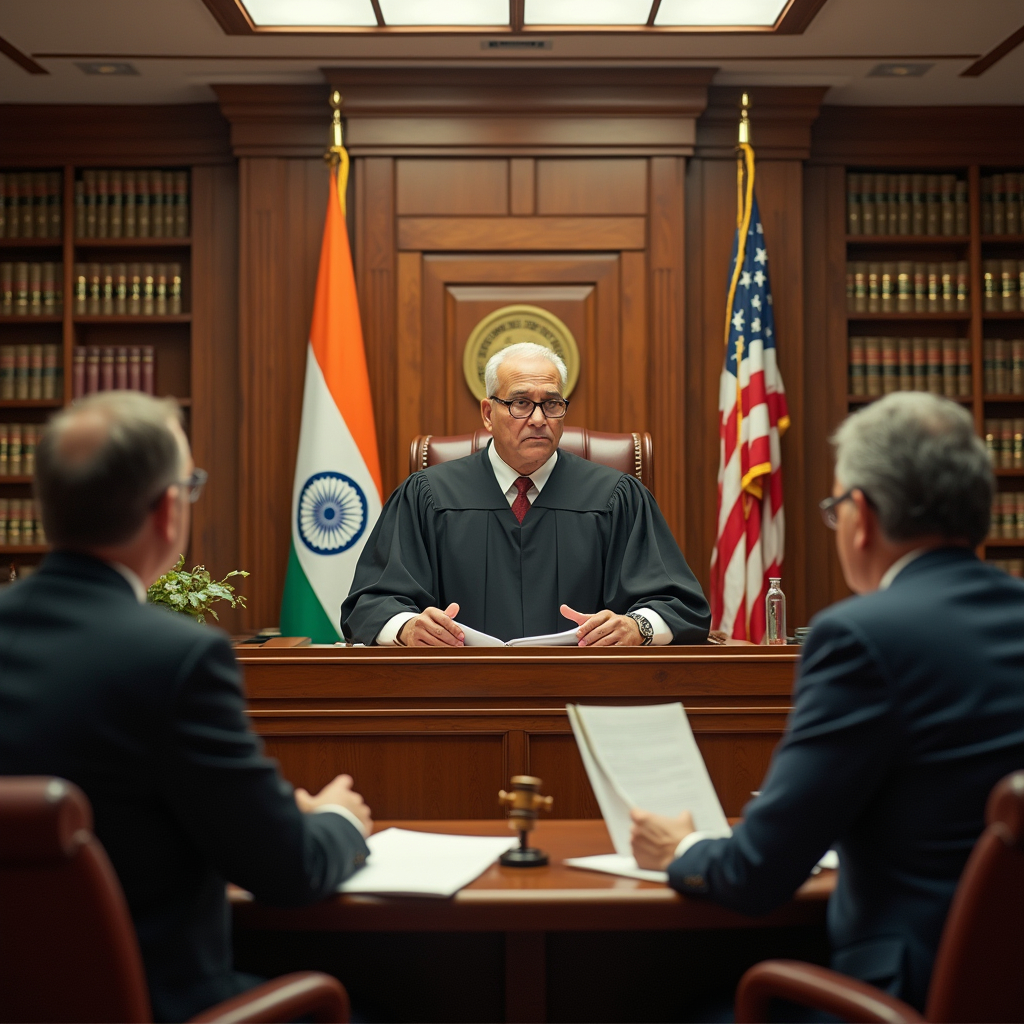
- insurance policy number and its validity period;
- date, time, and location of the accident;
- details of the individuals injured or killed in the accident;
- name of the driver and details of their driving licence.
Inspection of vehicle involved in the accident
Section 136 of the Act of 1988 provides that when an accident takes place involving a motor vehicle, any person authorised by the State Government may, upon presentation of their authority if requested, inspect the motor vehicle. For this purpose of inspection, they may enter any premises where the vehicle is located at a reasonable time and may remove the vehicle for examination. However, the owner of the vehicle must be informed of the location to which the vehicle is taken, and the vehicle shall be returned to the owner, driver, or person in charge within twenty-four hours after the necessary formalities have taken place.
Liability for compensation in specific situations based on the principle of no-fault
Section 140 of the Act of 1988 mandated compensation under specific circumstances based on the no-fault principle. Please note that, by the Amendment of 2019, this Section has now been omitted. Under this Section, the following was provided:
- It grants compensation to the aggrieved person if the vehicle itself, its owner, or the driver of such vehicle causes the death or permanent disability of the aggrieved party. In cases of death or permanent disability resulting from a motor vehicle accident, liability is determined under the ‘no-fault principle’;
- The amount of compensation to be paid to the aggrieved party under this section was as follows:
- In case of an accident resulting in the death of an aggrieved person, a fixed amount of compensation of Rs.50,000/- is payable; and
- In case an accident resulting in the permanent disability of an aggrieved person, a fixed amount of compensation of Rs. 25,000/- is payable.
- It was emphasised that compensation under this section is not contingent upon proving fault, negligence, or default by the claimant, heir or representative. The principle of no-fault liability governs these compensations;
- If the victim remained unaffected by the accident, the owner of the motor vehicle was liable to compensate according to this Act and any other applicable laws at the time the incident took place.
Refund in cases of compensation paid under Section 161 of the Act of 1988
Section 163(1) of the Act of 1988 provides that the payment of compensation for death of, or serious injury to, any person under Section 161 of the said Act is conditioned on the understanding that if any other compensation or amount is awarded or paid for such death or injury, then the portion of the other compensation equal to the amount paid under Section 161 shall be given as a refund back to the insurer.
Section 163(2) provides that before awarding the amount of compensation for an accident causing death or bodily injury due to the use of a motor vehicle, the Claims Tribunal, or the Court, or other relevant authority must verify whether compensation has already been paid under Section 161 or if an application for compensation is pending under that section. The Tribunal, or the Court, or authority shall do the following:
- If the amount of compensation has already been paid under Section 161, instruct the person liable to pay the compensation awarded to refund the appropriate amount to the insurer, as required by subsection (1);
- If an application for compensation is pending under Section 161, forward the details of the awarded compensation to the insurer.
Special provisions relating to compensation payments based on structured formula
Section 163A of the Act of 1988 prescribes the laws for granting compensation payments through a structured formula, which states that-
- The insured owner of the motor vehicle under an authorised insurer has a duty to compensate the legal heirs or the victim in case of death or permanent disability resulting from an accident involving the operation of the motor vehicle.
- The claimant does not have the burden to prove or argue that the death or permanent disability, for which the claim is being made, was due to any unlawful conduct, negligence, or failure on the part of the vehicle owner, the vehicle itself, or any other person involved.
Application for compensation
Section 166 of the Act of 1988 describes the procedure for payment of compensation. It states that:
- An application for compensation can be filed to the Motor Accident Claim Tribunal by:
- An injured person; or
- The owner of the property damaged or involved in the accident; or
- The legal representative of the deceased person who died in a road accident; or
- An authorised agent representing the injured person; or
- The legal representatives of the deceased person who died in the accident.
- The application for compensation shall be submitted on behalf of all legal representatives of the deceased person.

Claims Tribunals
Section 165(1) of the Act of 1988 provides that a State Government may, through a notification in the Official Gazette, establish one or more Motor Accidents Claims Tribunals for a specified area to adjudicate claims for compensation related to accidents resulting in death or bodily injury to individuals caused by the use of motor vehicles and for damages to third-party property arising from such accidents, or both.
Explanation to this subsection provides that the term “claims for compensation in relation to accidents resulting in death or bodily injury to individuals arising from the use of motor vehicles” includes claims for compensation under Section 164.
Section 165(2) of the Act of 1988 provides that a Claims Tribunal shall have as many members as the State Government deems appropriate to appoint. If the Claims Tribunal consists of two or more members, one of them shall be designated as the Chairman.
Section 165(3) of the Act of 1988 provides qualification for appointment as a member of a Claims Tribunal. No person shall be competent to be a member of the Claims Tribunal unless they:
- are or have been a Judge of a High Court, or
- are or have been a District Judge, or
- are qualified for appointment as a High Court Judge or District Judge.
Section 165(4) of the Act of 1988 provides that if multiple Claims Tribunals are established in a given area, the State Government may, through a general or special order, manage the allocation of business among them.
General provisions for punishment of offences
Section 177 of the Act of 1988 provides that a penalty of Rs.500/- is imposed on any person for the first time for violating the rules, regulations, or notifications under the said Act. For the second or subsequent time, the amount of penalty increases to Rs. 1000 and Rs. 500/-.
Penalties for travelling without a pass and for the conductor’s failure to perform their duties
It is provided under Section 178(1) of the Act of 1988 that any person who travels on a stage carriage without a valid pass or ticket, or who fails or refuses to present or surrender their pass or ticket for inspection upon request, shall be liable to a fine of up to five hundred rupees. The terms ‘pass’ and ‘ticket’ shall have the same meaning as defined under Section 124 of the said Act.
Section 178(2) provides that the conductor of a stage carriage, or the driver acting as a conductor, has the following duties:
(a) supply a ticket to a passenger upon payment of the fare and if he either willfully or negligently:
- fails or refuses to accept the fare when offered, or
- fails or refuses to provide a ticket, or
- issues an invalid ticket, or
- issues a ticket of lesser value, or
(b) check any pass or ticket, and either willfully or negligently fail to do so, they shall be subject to a fine of up to five hundred rupees.
Section 178(3) of the said Act provides that if the holder of a permit or the driver of a contract carriage refuses to operate the vehicle or transport passengers in violation of the said Act, or the rules made under it, they shall be subject to:
- a fine of up to fifty rupees for two-wheeled or three-wheeled motor vehicles; and
- a fine of up to five hundred rupees for all other vehicles.
Disobedience of orders, obstruction and refusal of information
Section 179 of the Act of 1988 addresses disobedience of orders, obstruction, and refusal of information, stating that-
- In case of absence of any other specified penalty for the offence, any person who intentionally disobeys the directions given by any person or authority under the said Act, or obstructs or hinders any person or authority having the authority to carry out the duties under this Act, shall be liable to pay a fine that may extend up to Rs. 2000
- In case of absence of any other specified penalty for the offence, any person who, under the said Act, is required to provide information and purposely withholds such information, or provides information that they know to be not true or do not believe to be true, shall be punished with an imprisonment for up to one month, or a fine of Rs. 2000, or both.
Driving vehicles in violation of Section 3 and 4 of the Act of 1988
Section 181 of the Act of 1988 provides for driving a motor vehicle under the requirement for a driving licence and the age restriction related to driving a motor vehicle. It states that:
- Any person who drives a motor vehicle without a licence as prescribed under Section 3 of the act; or
- Any person who drives a motor vehicle while under the age restriction prescribed under Section 4 of the Act;
are subject to imprisonment for a maximum period of three months or a fine of Rs. 5,000/-, or both.
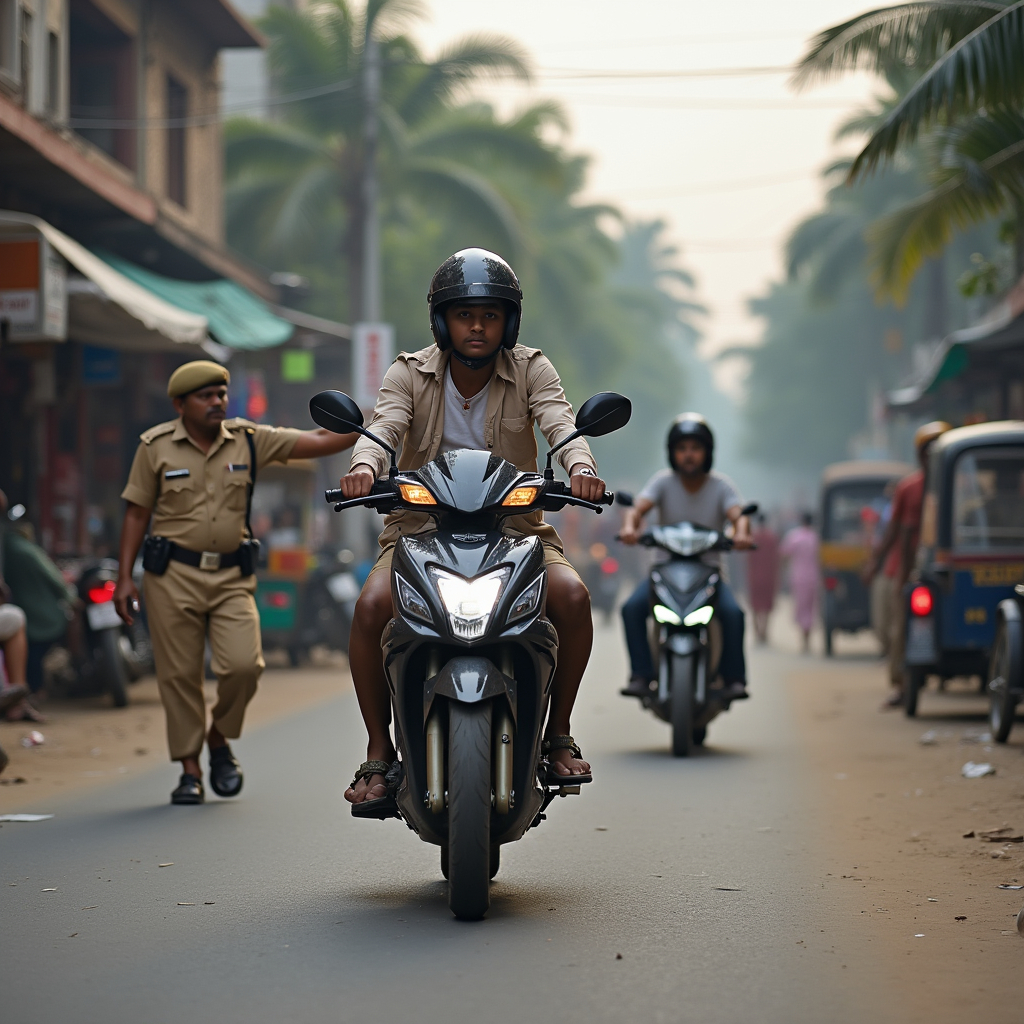
Driving at high speed, etc.
Section 183 of the Act of 1988 describes punishment for driving a motor vehicle at high speed. Sub-section (1) of Section 183 provides that who drives or allows to drive a motor vehicle in violation of the speed limits specified in Section 112 of the said Act (Speed limit) shall face penalties as follows:
- In case of light motor vehicles, a fine of not less than one thousand rupees and up to two thousand rupees;
- In case of medium goods vehicles, medium passenger vehicles, heavy goods vehicles, or heavy passenger vehicles, a fine of not less than two thousand rupees and up to four thousand rupees; and
- For the second or subsequent offence under this subsection, the driver’s licence shall be confiscated in accordance with subsection (4) of Section 206 of the said Act.
Section 183(3) of the said Act provides that no person shall be punished under the preceding subsection based solely on the testimony of one witness claiming that the individual was driving at a speed that was unlawful, unless that opinion is supported by an estimate obtained using a mechanical or electronic device.
Section 183(4) of the said Act provides for the publication of a timetable stating that a journey or part of a journey must be completed within a specific time. In case there is any directive to that effect, it shall be considered prima facie evidence that the person who issued the timetable or direction has committed an offence under subsection (1) if the court finds that completing the journey within that time would not be feasible without violating the speed limits set forth in Section 112 of the said Act.
Dangerous driving
Section 184 of the Motor Vehicle Act, 1988, deals with instances of driving a motor vehicle dangerously. It states that-
- Any person who drives a motor vehicle at a speed or in a manner dangerous to the public, considering all the circumstances, including the nature, condition, and use of the place where the vehicle is driven, as well as the amount of traffic present at that time;
- If such an offence occurs, the person shall be punished for the first time with imprisonment for six months or a fine that shall not be less than one thousand rupees and may extend up to five thousand rupees, or with both. For the second or subsequent time, if the same offence is committed within three years of the previous offence, then with an imprisonment of 2 years, a fine of 10,000 rupees or both.
Driving under the influence of alcohol and drugs
Section 185 of the Motor Vehicle Act, 1988, pertains to drinking and driving or a person who is under influence of drugs. It states that:
- Any person who drives or attempts to drive a motor vehicle:
- With alcohol concentration exceeding 30 milligrams per 100 millilitres of blood as determined by a breathalyser test; or
- While under the influence of a substance impairing their ability to control the vehicle.
- For the first offence, a person found driving inebriated or under the influence of narcotics faces imprisonment for 6 months, a fine of 10,000 rupees or with both.
- For subsequent offences committed within three years of the previous offence, the individual is liable to imprisonment for two years, a fine of 15,000 rupees, or both.
Motor Vehicle Act : amendments
On 1st September, 2019, the Motor Vehicle (Amendment) Act, 2019 came into force and completely replaced the Motor Vehicle Act, 1988. While the Bill for its enforcement was introduced in the Parliament, it was kept in mind that an important change was made in the Act for enhancing road safety of the drivers as well as the pedestrians. For this purpose, the traffic penalties were increased, protection was provided for good samaritans, making it an obligation upon the automobile companies to recall defective parts of the vehicle, holding the builders at fault if the quality of road infrastructure is not up to par, and holding the vehicle owners criminally accountable for any violation committed by a juvenile driver, etc.
Salient features of the Motor Vehicle (Amendment) Act, 2019
An amendment to the Act of 1988 was necessary to improve road safety in India. The following are the salient features of the new Motor Vehicle (Amendment) Act, 2019 (w.e.f. 09 August, 2019):
- The said Act makes it mandatory to have an “Aadhar number” before getting a driving licence or for registering a vehicle in the territory of India;
- There has been a significant increase in the amount of fine payable by an under-age driver, intoxicated driver, driving without a licence, reckless driving, over speeding, overloading, etc. It was also proposed by the Union that the amount of fines would increase each year by 10% in every financial year, i.e., on April 1 of every year;
- The owner or guardian of the vehicle cannot be held solely liable for a traffic rule violation committed by a minor unless they fail to prove that the violation occurred without their knowledge or that they took reasonable measures to prevent it;
- Under the said Act, the Union Government has been given the competence to recall any vehicle that could jeopardise the environment, road users, or other motorists. Once the vehicle is recalled, it is at the discretion of the recalled manufacturer to opt between the two:

- To compensate the buyers for the full cost of recalled vehicle; or
- To get the recalled vehicle replaced with a new one that has better or more enhanced similar specification than the earlier vehicle;
- It has become a mandate now for the vehicles to compulsorily pass fitness inspection. This is done so that the quality of the vehicle being used to drive on the open road could be checked and decrease corruption in the transport industry. This directly covers the testing agencies and their requirements for vehicle testing and certification.
- This Act also covers the benevolent persons who help the victims of road accidents and end up being the victims of harassment. For this purpose, the Act defines ‘samaritan’ as a person who offers help to a victim of a road accident, immediately after the accident takes place. The help offered by the ‘samaritan’ may be medical help or any other form of help as defined in the Act. It must be done in good faith, voluntarily and without any expectation of receiving any amount of compensation. This protects the ‘samaritan’ from any civil or criminal liability if any injury or demise of an accident victim takes place because of sheer negligence.
- The Central Government has, under the said Act, established a National Road Safety Board. This Board has been established to advise the State Governments and the Federal Governments on all matters pertaining to traffic regulations and road safety. Every State Government shall have officials on Board.
- This Act has made it incumbent upon the Central Government to create a Motor Vehicle Accident Fund to provide all users of Indian roads with a requirement to carry insurance. It is used for the following purposes, as mentioned below:
- Provide treatment to victims of accident in accordance with the golden hour system;
- In hit-and-run accidents, compensate the family of the victim of accident;
- In hit-and-run accidents, compensate the victim of the accident;
- Pay compensation to the individual as per the mandate of the Central Government.
- Under this Act, for the victims of traffic accidents, the Golden Hour Care Plan has been established with cashless care. The term ‘golden hour’ means the time period of one hour from the moment the accident took place. It is the time duration in which the victim’s chances of survival are maximum if subjected to proper care and immediate medical treatment.
- The Amendment of 2019 now covers the driver’s assistance and there is no limit on liability insurance amount. There has been a ten-fold increase in insurance compensation amount and the procedure to obtain the amount of insurance compensation claim has been simplified. It is the obligation of the companies to resolve the insurance claim within a period of one month after getting approval from the family of the victim. In the cases of fatal hit-and-run accidents, the minimum compensation for injuries is now Rupees Two Lakhs from Rupees Twenty-five thousand, and for serious injuries caused to the victim, the amount of compensation is now Rupees Fifty Thousand from Rupees Twelve Thousand Five Hundred.
- A new term, ‘Taxi Aggregators’, is also included in the said Act. They are the intermediaries who make use of a digital platform to book rides, facilitating the connection between drivers and passengers. These intermediaries are provided with licences by their respective State Governments and must comply with the provisions of the Information and Technology Act, 2000.
Key provisions of the Motor Vehicle (Amendment) Act, 2019
The following Sections are the key provisions under the Motor Vehicles (Amendment) Act, 2019:
Settlement by the insurance company and procedure thereof
Section 149(1) of the said Act mandates that upon receiving information about an accident, whether from the claimant through an accident information report or by other means, the insurance company must appoint an officer to manage the claims related to the reported accident.
Section 149(2) of the said Act specifies that an officer appointed by the insurance company under the preceding subsection has the responsibility for processing the compensation claims and may present a settlement offer to the claimant before the Claims Tribunal. This must be completed within thirty days and in accordance with the procedures prescribed by the Central Government.
Section 149(3) of the said Act provides that, if the claimant to whom the offer is made under sub-section (2) of Section 149:
- Accepts the offer-
- The Claims Tribunal shall record the settlement, and the claim shall be presumed to have been settled by the consent of the claimant;
- Within a maximum period of thirty days after the consent is given by the claimant, the insurance company must make the payment.
- Rejecting the offer, a next date of hearing shall be fixed by the Claims Tribunal to decide the claim on merits of the case.
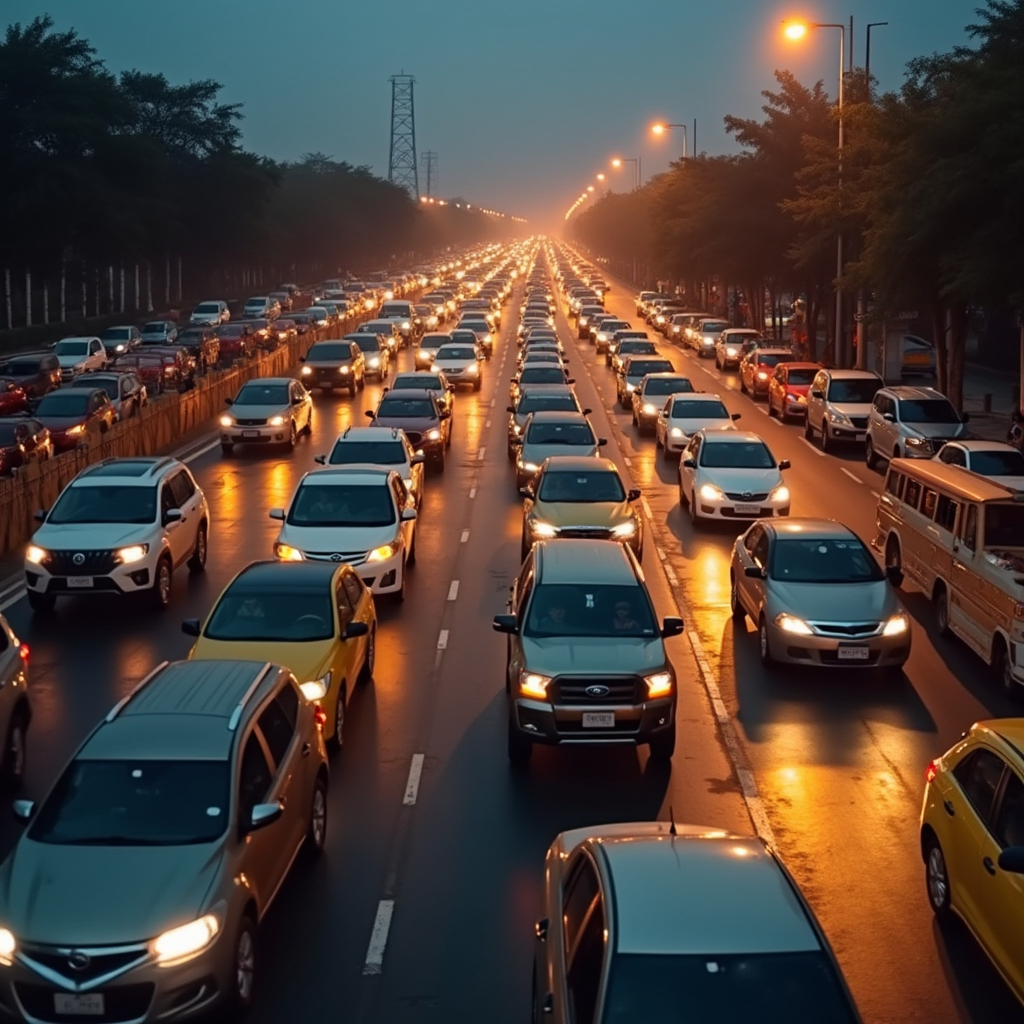
Submission of special certificates, licences, and permits in certain cases
Under Section 158(1) of the said Act, any person driving a motor vehicle in a public place must, upon request by a uniformed police officer authorised by the State Government, produce the following documents:
- Insurance Certificate;
- Registration Certificate;
- Certificate of pollution under control;
- Driving Licence;
- For a transport vehicle, under Section 56 of the said Act, the certificate of fitness and its permit;
- Under this Act, any certificate or exemption authorisation in relation to the use of the vehicle.
Section 158(2) provides that if an accident has been caused and death or bodily injury has occurred in the presence of a motor vehicle in a public place and the driver is not able to produce the requisite certificate, driving licence, and permit to a police officer at the time when the incident took place, it is necessary for the driver or the owner of the vehicle to produce these documents at the police station where the driver reports the incident under Section 134.
Section 158(3) provides that no person shall be convicted for offences under subsections (1) and (2) of Section 158 as a consequence of failing to produce the required certificate. This condition will be met only if the person presents the certificate at the police station specified by them to the requesting police officer, the police officer who was present at the site of the accident, or the officer-in-charge of the police station within a period of seven days from the date it was asked under sub-section (1) or from the date on which the accident took place.
Section 158(4) provides that it is an obligation of the owner of the motor vehicle to provide any information as requested by or on behalf of a police officer authorised by the State Government. This information is essential as it assists in verifying whether the motor vehicle was being driven in violation of Section 146 and whether the driver of the motor vehicle was obligated to furnish the certificate of insurance.
Section 158(5) defines the term “produce the certificate of insurance.” It means presenting the pertinent certificate of insurance for scrutiny or any other credible evidence demonstrating that the motor vehicle was not being driven contrary to the provisions of Section 146 of the said Act.
Information to be provided about the accident
Section 159 of the said Act requires that a police officer, when investigating an accident, must prepare a report aimed at facilitating the settlement of claims. The report format must adhere to the prescribed guidelines, including essential details, and be submitted to the Claims Tribunal and any other designated authority within a period of three months.
Golden hour scheme
Section 162(1) of the Act introduces the golden hour scheme, requiring general insurance companies operating in India to provide treatment to road accident victims during the critical golden hour period, as outlined in the provisions of the said Act, irrespective of the General Insurance Companies (Nationalisation) Act, 1972, or any other existing laws or legal documents.
Section 162(2) of the said Act mandates that the Central Government establish a scheme for the cashless treatment of victims of accidents during the golden hour, which may involve setting up a dedicated fund for this purpose.
Compensation payment in cases of death or grievous hurt, etc.
Under sub-section (1) of Section 164 a provision for payment of compensation in case of death or grievous hurt, etc. is provided. Notwithstanding any provisions in the Motor Vehicle (Amendment) Act, 2019, any other current law or any other law for the time being in force or any instrument having legal enforceability and validity, the owner of the motor vehicle or the authorised insurer shall be bound to pay the amount of compensation at the time of death or grievous hurt caused resulting from an accident involving the use of a motor vehicle. The amount of compensation payable shall be rupees five lakhs in case of death and rupees two lakh fifty thousand shall be payable in case of grievous injury, payable to the legal heirs of the deceased or the victims, as the case may be.
Sub-section (2) provides that at the time of claiming compensation under the preceding sub-section, the claimant is not required to plead or prove that the death caused or grievous injury incurred was due to any wrongful act, neglect, or default of the owner of the vehicle, the vehicle itself, or any other person.
Sub-section (3) specifies that the compensation amount payable under this Section will be reduced by any compensation that has already been paid to the claimant under another existing law for death caused or injury resulting from a motor vehicle accident.

Scheme for interim relief for claimants
Section 164A(1) makes a mandate upon the Central Government to establish schemes for providing interim relief to claimants seeking compensation under Chapter XI of the Motor Vehicle (Amendment) Act, 2019.
Section 164A(2) provides that the scheme established under sub-section (1) of Section 164A must outline the procedure for recovering disbursed funds from the owner of the motor vehicle in cases where the claim stems from the use of that motor vehicle, or from other specified sources as determined by the Central Government.
Motor Vehicle Accident Fund
The Central Government under Section 164B(1) of the said Act shall constitute a ‘Motor Vehicle Accident Fund’, which shall be credited with:
- The nature of payment notified and approved by the Central Government;
- Any grant or loan made to the Fund by the Central Government;
- The balance of the Fund created under the scheme framed under section 163, as it stood immediately before the commencement of the Motor Vehicles (Amendment) Act, 2019; and
- Any other source of income as prescribed by the Central Government.
Sub-section (2) of Section 164B provides that the ‘Motor Vehicle Accident Fund’ shall be established to provide compulsory insurance coverage to all road users within the Indian territory.
Sub-section (3) of Section 164B provides that the Fund established under this Section shall be used for the following purposes:
- To provide treatment to persons injured in road accidents according to the schemes framed by the Central Government under Section 162;
- To provide compensation to the legal representatives of the deceased who died in a hit-and-run motor accident according to the schemes framed under Section 161;
- To provide compensation to persons injured grievously in a hit-and-run accident according to the schemes framed under Section 161; and
- To provide compensation to such other persons as prescribed by the Central Government.
Sub-section (4) of Section 164B provides that in each case, the maximum liability amount shall be as prescribed by the Central Government.
Sub-section (5) of Section 164B provides that in all the cases provided in Section 165(B)(3)(a) of the said Act, when the amount of claim becomes payable, any amount that has been paid from this fund to a person shall be deducted from the claim received by that person from the insurance company.
Sub-section (6) of Section 164B provides that the Motor Vehicle Accident Fund shall be managed by an authority or agency specified by the Central Government, keeping in mind the following factors:
- The agency’s knowledge of insurance business;
- The agency’s capability to manage fund;
- Any other criteria as may be prescribed by the Central Government.
Sub-section (7) of Section 164B provides that the Central Government shall maintain proper books of accounts, relevant records and prepare an annual statement of account for the Motor Vehicle Accident Fund shall be prepared in the prescribed form. It shall be done in consultation with the Comptroller and Auditor General of India.
Sub-section (8) of Section 164B provides that the accounts of Motor Vehicles Accident Fund shall be audited by the Comptroller and Auditor General of India at specified time intervals.
Sub-section (9) of Section 164B provides that under this Act, the Comptroller and Auditor General of India, or any person appointed by them to audit the accounts of the Motor Vehicle Accident Fund, shall have the same rights, privileges, and authority as in the audit of government accounts. It also includes the right to demand the production of books, accounts, vouchers and other documents, as well as the right to inspect any of the authority’s offices.
Sub-section (10) of Section 164B provides that the accounts of the Motor Vehicle Accident Fund, as certified by the Comptroller and Auditor-General of India or any person appointed by them, along with the audit report, shall be forwarded annually to the Central Government. The Central Government shall then present these documents before both Houses of Parliament.
Sub-section (11) of Section 164B provides that any scheme formulated under Section 161(3) of the said Act, as it existed before the commencement of the Motor Vehicle (Amendment) Act, 2019, shall be terminated. All the rights and obligations arising from such schemes shall be fulfilled using these funds from the Motor Vehicle Accident Fund from the date of commencement of the Motor Vehicle (Amendment) Act, 2019, i.e., September 1, 2019.
Motor Vehicle Amendment, 2020
The Motor Vehicle Act of 1988 underwent a substantial Amendment in 2020, effective from October 1, 2020. One notable change was that it allowed the drivers to keep a softcopy of their driver’s licence and other documents in their vehicle instead of carrying physical papers. It helped millions of people who use the roadways on a daily basis. This change was implemented by the Ministry of Road to ensure compliance with traffic regulations, promote digitalisation, and minimise unnecessary inconvenience to drivers by police officers.
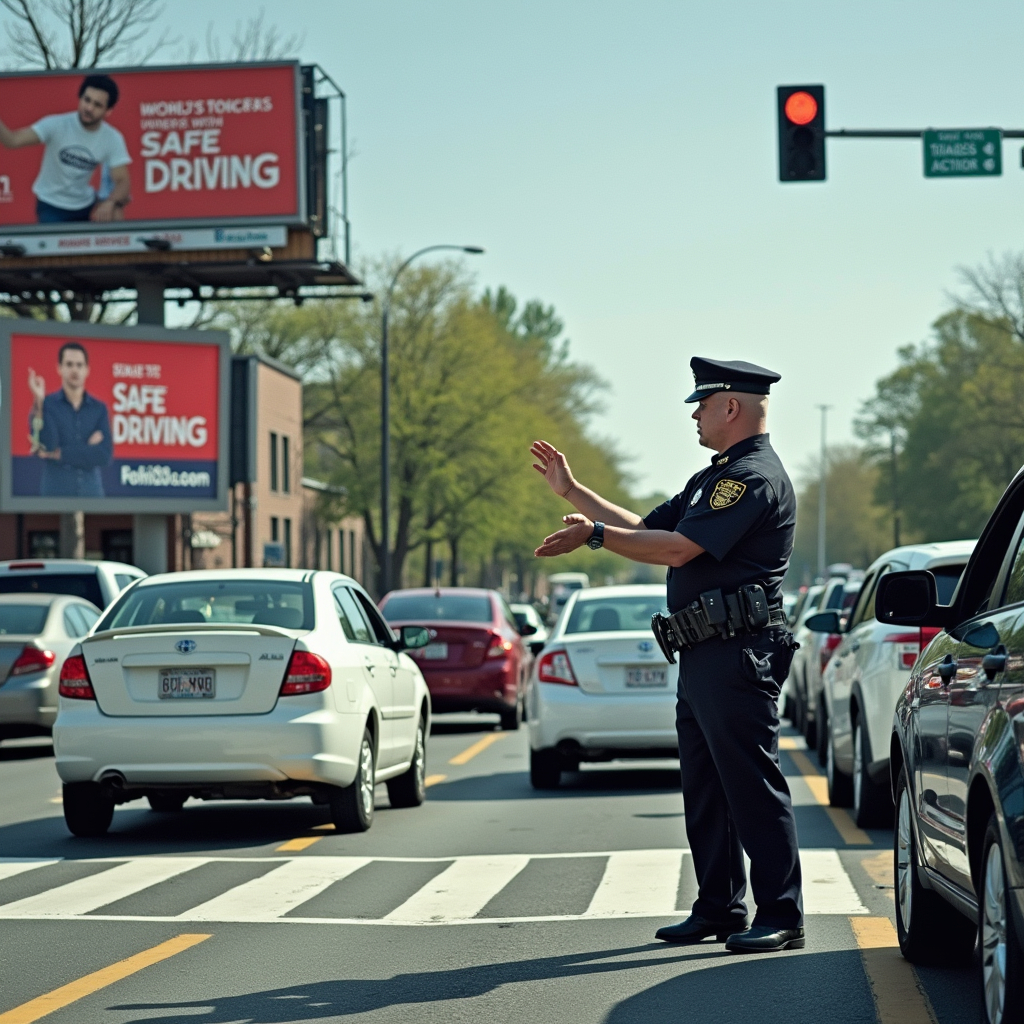
Changes in the traffic rules under the Amendment of 2020
- The Amendment of 2020 allows individuals to keep documents on their mobile devices, sparing them the burden of carrying physical copies. If requested by the police officer, drivers can now present soft copies of their driver’s licence and other related documents.
- The documents of the motor vehicle will no longer undergo physical inspection. The authorities have the power to cancel a driver’s licence through an updated website.
- The behaviour of the driver will be monitored and the identity of the police officer will be updated on the site as per the official announcement. The site will be regularly updated with information from every driver or vehicle inspection. Driver’s licence and registration certificates can be stored online on the government’s DigiLocker or m-Parivahan platforms.
- On the government’s DigiLocker or m-Parivahan, driver’s licences and other papers, such as registration certificates, can be kept online.
- To ensure drivers maintain focus, portable communication devices like cell phones can only be used for navigation. The Motor Vehicle Act of 1988 includes fines for traffic law violations, reducing the need for frequent checks and easing traffic congestion. Violators will receive an e-challan via the government’s digital platform.
- After a driver’s licence is cancelled, offenders must report to Parivahan Sarathi website.
Recent Supreme Court judgements on Motor Vehicle Act, 1988
United India Insurance Co. Ltd. vs. Sunil Kumar and Anr., (2017)
The Hon’ble Supreme Court has held in this case that an insurer cannot raise any defence of negligence on the part of the victim as provided under Section 163A(2) of the Act of 1988 and is not entitled to file a claim for negligence. This landmark case interprets Section 163A of the said Act, which includes specific provisions for compensatory payments based on a structured formula. Below are the facts, issues, and the Court’s ruling in this case:
Facts of the case
- In this case, the respondent filed a compensation claim under Section 163A of the Motor Vehicle Act, 1988, for injuries sustained in a traffic accident on November 20, 2006.
- Following the recording of evidence and hearing the parties, the tribunal issued a judgement dated August 16, 2011, awarding Rs. 3,50,000/- along with an interest at a rate of 7% per annum.
- Subsequently, the insurance company, dissatisfied with the ruling, appealed the decision, citing non-compliance with Section 170 of the Motor Vehicle Act, 1988. The appeal was subsequently escalated to the Supreme Court for adjudication.
Issues involved
In a claim procedure under Section 163A of the Motor Vehicle Act, the issue arose in this case as to whether the insurer has the capability to raise a defence or plea of negligence?
Judgement of the case
The Court held that in cases under Section 163A of the Act of 1988, insurance companies cannot present a defence of negligence on behalf of the victim. Section 163A (2) of the Motor Vehicles Act, 1988, specifically prohibits this practice. Therefore, the owner or insurance company will be liable for compensation and held the following:
- Compensation under Section 163A is in the nature of a final award, and adjudication is made without the need for proof of negligence on the part of the driver or owner of the vehicles involved in the accident.
- Section 163A (2) expressly states that it is not necessary for the claimant to prove fault. However, the abovementioned clause does not expressly rule out the possibility of an insurer’s defence based on the claimant’s carelessness. Nevertheless, permitting an insurer to employ such a defence under such circumstances would contradict the legislative intent behind Section 163A of the Act.
Mukund Dewangan vs. Oriental Insurance Company Limited (2017)
The Hon’ble Supreme Court in this case held that a driver holding a light motor vehicle licence can operate a transport vehicle without requiring an endorsement. Below are the facts, issues, and the court’s decision in this case:
Facts of the case
- The licences issued in this case covered various vehicle categories, namely, light motor vehicles, medium goods vehicles, medium passenger motor vehicles, heavy goods vehicles, and heavy passenger motor vehicles.
- To streamline the driver’s licence acquisition process, certain categories, including those mentioned above, were removed. A new category for transport vehicles was introduced following an amendment to the Motor Vehicle Act of 1989 on November 14, 1994.
- Form No. 4 of the 1989 regulations, used for licence applications, initially listed four different categories. It was not until March 28, 2001, that Form No. 4 was amended to include the term “transport vehicle,” aligning with the 1994 Amendment to the Motor Vehicle Act of 1989.
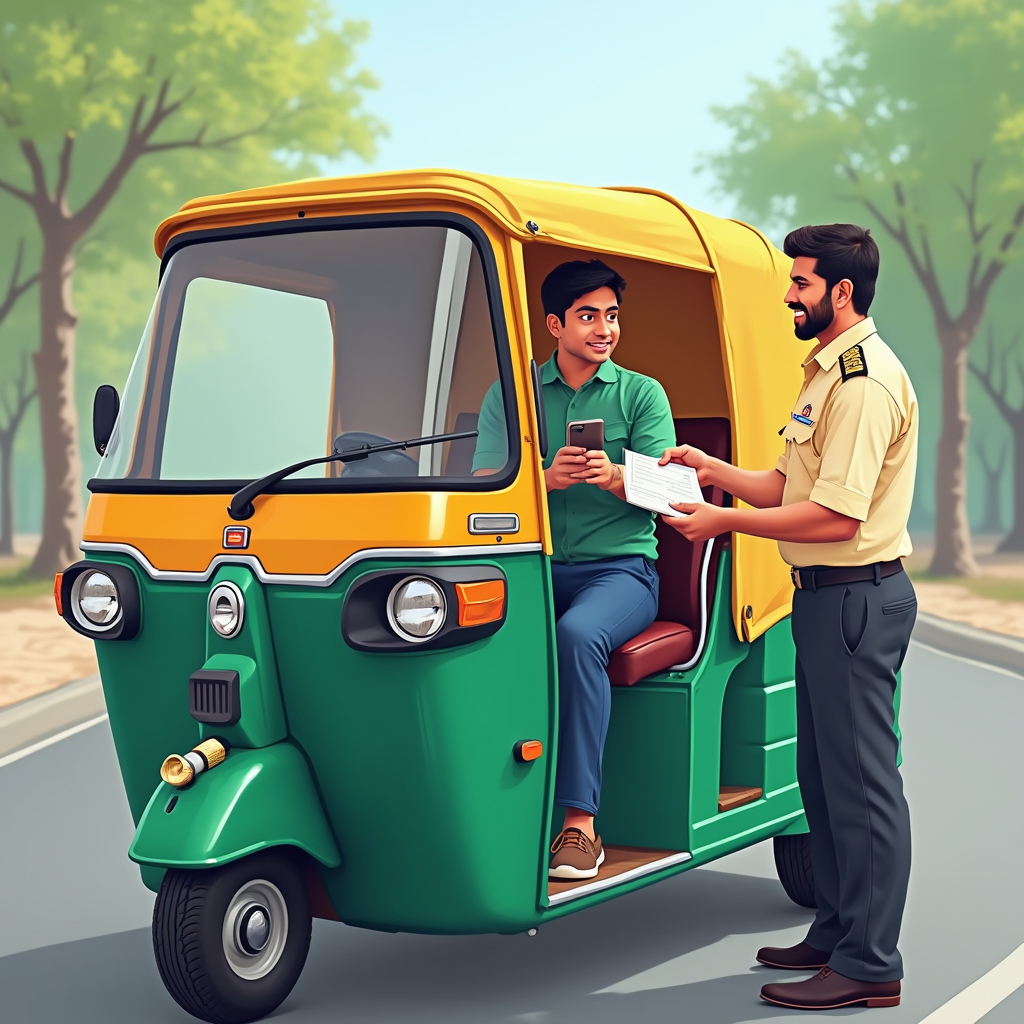
Issues involved
- Whether a driver holding a light motor vehicle licence needs an endorsement to operate a transport vehicle of the same class?
Judgement of the case
According to the Hon’ble Supreme Court it was held that if a driver holds a light motor vehicle licence and operates a transport vehicle of the same type, no additional endorsement is required.
Pappu Deo Yadav vs. Naresh Kumar and Ors. (2020)
The Hon’ble Supreme in this case held that accidents causing permanent disability, regardless of the percentage of disability, if a person becomes permanently incapacitated from continuing their previous profession, vocation, or business and their income-generating capacity has been affected adversely, future prospects shall be awarded.
Facts of the case
- The appellant was travelling to Hapur by bus. The bus reached Sidakpur, where the driver of the offending bus overtook the bus in which the appellant was travelling. The offending bus was coming from the wrong side and dashed the appellant’s bus, scratching it.
- The incautious and careless act of the offending bus caused a dent in the bus where the appellant was seated and he suffered injuries.
- The appellant asked for compensation claims against the vehicle owner, driver, and insurer. At the same time, he also applied for assessment of his disability while the case was ongoing before the Motor Accident Claims Tribunal.
- He applied for compensation under Sections 140 and 166 of the Motor Vehicles Act, 1988. He claimed Rupees Fifty Lakhs with an interest of twelve percent per annum against the first respondent (the driver of the bus at the time of accident), the second respondent (the owner of the vehicle) and the third respondent (the insurer).
- The Motor Accident Claims Tribunal rejected the appellant’s objection regarding its jurisdiction and held that the appellant had suffered injuries as a result of incautious and careless driving of the respondent.
Issues involved
- Whether in case of permanent disablement caused due to a motor accident, the claimant can seek compensation beyond the future loss of income, amounts for future?
- What is the extent of permanent disability?
Judgement of the case
- The Hon’ble Supreme Court held that in determining the amount of compensation to the accident victims who are disabled, either temporarily or permanently, efforts should be made to award adequate compensation not only for the physical injury and treatment but also for the loss of earning capacity and the inability to live a normal life.
- The extent of permanent disability is typically determined by doctors with reference to the whole body or, more commonly, with reference to a specific limb. If the claimant suffers permanent disabilities due to the injuries caused, the assessment of the amount of compensation for loss of future earnings depends on the effect and impact of such permanent disability on their earning capacity.
Joginder Singh vs. ICICI Lombard General Insurance (2019)
The Hon’ble Supreme Court in this case held that the age of the deceased has to be taken into consideration while computing the amount of compensation payable, not the age of the dependents of the deceased.
Facts of the case
- The deceased, Ambika Thakur, was twenty years of age at the time of her death. She was travelling in her car with registration number ‘CH-04-H-0297’ from Chandigarh to Bathinda. Her vehicle collided with a Tata Ace registered under ‘PB-03T-4804’. The Tata Ace was being driven rashly and negligently.
- The offending vehicle abruptly came to a halt in front of her car, causing a head-on collision that tragically resulted in Ambika Thakur’s death.
- The offending vehicle was insured with the Respondent – Insurance Company.
Issues involved
- Whether the multiplier for computing the amount of compensation in case of a bachelor should be based on the age of the deceased or the age of the parents?
Judgement of the case
- The Hon’ble Supreme Court in this case held that the age of the deceased, not the age of the parents, should be considered when determining the appropriate multiplier to be applied.
Kirti vs. Oriental Insurance Company Limited (2021)
The Hon’ble Supreme Court in this case held that the issue of granting future prospects is no longer unsettled and is now firmly established.

Facts of the case
- On April 12, 2014, around 7 AM in Delhi, Vinod and Poonam, a couple commuting on a motorcycle, were involved in a collision at an intersection with a car registered as ‘DL 7CA 1053’. The impact incapacitated them instantly, leading to their deaths due to cranio-cerebral damage and hemorrhagic shock from the blunt-force trauma of the accident.
- Under Section 166 of the Motor Vehicles Act, 1988, a claim petition was filed by the two young daughters and elderly parents of the deceased.
- The driver and owner of the offending vehicle contended that the deceased couple were driving negligently and that the accident was a result of their own actions.
- Two witnesses were examined from the side of the claimants (the appellant), while none were presented from the side of the respondents.
Issues involved
- Whether the deduction for personal expenses should be calculated taking into account the death of the mother?
- Which tier of minimum wages should be used for evaluating income?
- Whether compensation should be granted for the deceased’s potential future earnings in the absence of employment records or a steady income source?
Judgement of the case
- The Hon’ble Supreme Court held that the justification for including future prospects in compensation awards is no longer restricted to the nature of employment, whether permanent or otherwise, although the percentage awarded is still a considerable factor.
- Incorporating future prospects is now integral to the Court’s responsibility to ensure fair compensation, taking into account real-life factors such as inflation, individuals’ efforts to enhance their and their families’ lives, increasing wage levels, and the impact of experience on work quality.
Key takeaways from this case
The following considerations must be taken into account when calculating notional income for homemakers and granting compensation for their future prospects:
- It is a well-established principle to award compensation to homemakers based on financial considerations.
- Recognizing the gendered nature of household responsibilities, where a significant majority of women are typically involved compared to men, calculating a notional income for homemakers holds significance. This practice acknowledges their contributions, labour, and sacrifices, reflecting the positive, changing societal attitudes. It also aligns with our country’s international legal obligations and constitutional principles of social equality and ensuring dignity for all.
- The Court may calculate the notional income of a homemaker on the basis of their work, labour and sacrifices on the basis of each case.
- When selecting a method and assessing notional income, the Court should be fair in considering the particular circumstances of the case and avoiding both extremely conservative and generous estimates of the amount of compensation.
- It should also include future prospects based on the calculated notional income, which is a crucial aspect of ensuring just compensation in such cases.
Penalties under the New Motor Vehicle Act, 2019
The following are the penalties under the New Motor Vehicle Act, 2019:
| S. No | Violation | Legal Provision under the Act of 2019 | New penalty from September 2019 |
| 1. | Driving/ Riding without licence | Section 181 | ₹5,000 and/or community service. |
| 2. | Driving/Riding under the influence of an intoxicating substance | Section 185 | ₹10,000 and/or 6 months prison| ₹15,000 and /or 2 years jail for the repetitive violation. |
| 3. | Overspeeding | Section 183 | Light motor vehicle: ₹1,000- ₹2000MPV/HPV: ₹2,000-₹4,000 (+licence seizure). |
| 4. | Driving without a seat belt | Section 194B | ₹1,000 and/or community service. |
| 5. | Driving/Riding without insurance | Section 196 | ₹2,000 and/or 3-months prison, community service | ₹4,000 for a subsequent offence. |
| 6. | Violating road regulations | Section 177A | ₹500- ₹1000 |
| 7. | Dangerous driving/riding and jumping red light | Section 184 | ₹1,000- ₹5,000 and/or 6-months to 1 year in prison, licence seizure. |
| 8. | Driving/Riding while on the mobile (handheld) | Section 177 | ₹5,000 |
| 9. | Speeding, Racing | Section 189 | ₹5,000 and/or 3-months prison, community service | ₹10,000 for subsequent violation and up to 1 year in prison, community service. |
| 10. | Not giving way to emergency vehicles like ambulances, fire engines, etc. | Section 194E | ₹10,000 and/or community service. |
| 11. | Riding without Helmet (rider and pillion rider) | Section 129 | ₹1000, and or licence disqualification, community service for 3-months. |
| 12. | Overloading Two-Wheelers | Section 194C | ₹2,000 and licence disqualification and/or 3-months of community service. |
| 13. | Juvenile Offences | Section 199A | ₹25,000 with 3-years prison, cancellation of registration for 1-year, juvenile ineligible for licence until 25 years of age. |
| 14. | Driving/Riding despite disqualification | Section 182 | ₹10,000, and/or community service. |
| 15. | Overboarding Passengers | Section 123 | ₹200 for every extra passenger and/or community service. |
| 16. | Driving/Riding without ticket | Section 178 | ₹500 |
| 17. | Offence committed by enforcing authorities such as offering bribes | Section 210B | Twice the penalty (varies according to traffic rules violated). |
| 18. | Unauthorised use of vehicles without licence | Section 180 | ₹1,000- ₹5,000 |
| 19. | Disobedience of orders of the authorities | Section 179 | ₹2,000 |
| 20. | Vehicles without permit | Section 192 | ₹10,000 and/or up-to 6-months prison, community service. |
| 21. | Oversized Vehicles | Section 182B | ₹5,000 to ₹10,000 and/or community service. |
| 22. | Overloading | Section 114 | ₹20,000 + ₹2,000 for every extra tonne and/or community service. |
| 23. | Driving/Riding without licence (for aggregators) | Section 36 | ₹25,000 to ₹1,00,000 |
| 24. | Driving/Riding without registration | Section 192 | ₹5,000 | ₹10,000 for a subsequent offence. |
| 25. | Using horn in silent zone | Section 194F | ₹2,000 | ₹4,000 for a subsequent offence. |
Central Motor Vehicle Rules, 1989
The Ministry of Road, Transport, Highways, and Shipping introduced the Central Motor Vehicle Rules in 1989, which regulate various aspects of vehicle-related activities. These include driver licensing, traffic inspections, manufacturing and maintenance of motor vehicles, as well as the licensing of automotive components and entire vehicles.
Rule 3 of Central Motor Vehicle Rules, 1989 states that this rule does not apply to individuals who are receiving driving lessons or gaining driving experience while undergoing a test of competence to drive, provided the following conditions are met:

- The person holds a valid learner’s licence issued in Form 3 for driving the vehicle.
- The person is accompanied by an instructor who holds a valid driving licence for the vehicle being driven, and the instructor is positioned to control or stop the vehicle.
- The letter ‘L’ is prominently displayed in red on a white background on both the front and rear of the vehicle, or on a plate or card affixed to the vehicle
Rule 4 of Central Motor Vehicle Rules, 1989 states that every applicant of a motor vehicle licence must provide evidence of their address and age by submitting one or more of the following original documents or relevant self-attested extracts:
- Electoral Roll;
- Life Insurance Policy;
- Passport;
- Pay slip issued by any office of the Central Government, State Government, or local authority;
- School Certificate;
- Birth Certificate;
- Certificate issued by a registered medical practitioner, not below the rank of Civil Surgeon, verifying the applicant’s age;
- Any other document(s) that may be prescribed by the State Government under clause (k) of section 28 of the Act of 1988;
- Proof of legal presence in India, along with proof of residence for foreigners.
In cases where the applicant has sufficient reasons for not possessing any of the above-mentioned documents, the licensing authority may accept an affidavit sworn by the applicant before an Executive Magistrate, First Class Judicial Magistrate, or Notary Public as proof of age and address.
Rule 5 of the Central Motor Vehicle Rules, 1989 states the following:
- When an applicant applies for a learner’s licence, driving licence, adding another class or category of motor vehicle to a driving licence, or renewing a driving licence to operate a non-transport vehicle, they must include a self-declaration of physical fitness in Form 1. The application for a licence to drive a transport vehicle must be accompanied by a medical certificate in Form 1A issued by a registered medical practitioner as specified in sub-section (3) of Section 8 of the Act of 1988;
- An application for a medical certificate must include a declaration in Form 1;
- A medical certificate issued in Form 1A shall be valid for a period of one year from the date of issue. It must also include a passport-sized photograph of the applicant.
Rule 6 of Central Motor Vehicle Rules, 1989 provides for a condition when an applicant is exempted from the requirement of submitting a medical certificate. Any applicant who has submitted a medical certificate for obtaining a learner’s licence or driving licence for the purpose of initial issuance, renewal or adding another class of motor vehicle to their licence will not need to provide a medical certificate again, except when applying for the renewal of a driving licence.
Central Motor Vehicles (Second Amendment) Rules, 2022
On February 15, 2022, the Ministry of Road Transport and Highways released the Central Motor Vehicles (Second Amendment) Rules, 2022, to amend the Central Motor Vehicles Rules, 1989. In the Central Motor Vehicles Rules, 1989, after sub-rule (6) to Rule 138, the following sub-rule (7) has been added:
After one year from the date of publication of the Central Motor Vehicles (Second Amendment) Rules, 2022, the driver of a motorcycle should also ensure the following safety measures while carrying a child between the ages of nine months and four years as a rider, namely:
- For children under the age of four years, a safety harness shall be used to attach the child to the driver of the motorcycle. The safety harness should include the following:
- Lightweight, adjustable, waterproof, and durable;
- Made from heavy nylon or multifilament nylon with high-density foam; and
- Designed to support weights of up to 30 kg.
- It is the duty of the driver to ensure that any child pillion passenger between the ages of nine months and four years wears a properly fitting crash helmet or a bicycle helmet that meets the standards of ASTM 1447] or [European (CEN) BS EN 1080/BS EN 1078], until specific guidelines are established by the Bureau of Indian Standards under the Bureau of Indian Standards Act, 2016.
- The motorcycle’s speed with a child up to four years old riding as a pillion must not exceed 40 km/h.
Difference between the Motor Vehicles Act, 1988 and Motor Vehicles (Amendment) Act, 2019
- Safety of pedestrians and non-motorized transport
- There were no provisions in the Motor Vehicles Act, 1988 for the safety and security of pedestrians and non-motorised road users.
- Section 138(1A) of the Motor Vehicles (Amendment) Act, 2019 empowers the State Government to regulate the activities of pedestrians and non-motorised road users in public places. It also suggests that the State Government should regulate the activities of pedestrians and non-motorized road users.
- Safety of children at the time of commute
- There were no provisions in the Motor Vehicles Act, 1988 for the safety of children during a commute.
- Section 194B of the Motor Vehicles (Amendment) Act, 2019 makes it compulsory that every child must be secured by either a safety belt or a child-restraint system. It imposes a fine of Rs. 1000 on adults who fail to seat children safely.
- The amendment to Section 129 of the Motor Vehicles Act, 1988, provides that every child above the age of four years, riding on a motorcycle, must wear a helmet conforming to design and specifications prescribed by the Central Government. Additionally, under Section 137(aa) of the said Act, the Central Government is empowered to establish standards for protective gear and safety measures for children under four years of age, as stipulated under Section 129 of the Motor Vehicles Act, 1988.

- Recalling of vehicles
- There were no provisions in the Act of 1988 for recalling vehicles that are old, harmful to the environment, or fail to meet safety standards.
- Sections 110A and 110B of the Act of 2019 authorises the Central Government to recall vehicles that do not meet safety standards and also establish testing agencies responsible for issuing certificates of approval.
- Severe penalties for inadequate road design, engineering, and maintenance
- The Motor Vehicles Act of 1988 originally lacked provisions to hold road contractors and civic agencies responsible for faulty road design and neglecting maintenance, potentially causing accidents.
- However, Section 198A of the Motor Vehicle (Amendment) Act, 2019 addresses this gap by aiming to enforce accountability among road contractors, consultants or concessionaires for flawed road design, construction, and maintenance. Violation of these standards could incur fines of up to Rupees One Lakhs.
- Transparent, centralised, and efficient driver’s licensing system
- The Motor Vehicles Act of 1988 did not have a centralised database for all licences and motor vehicles across the territory of India. Due to this, there were a number of cases where individuals possessed multiple licences issued by different States.
- Second proviso to Section 9(3) Motor Vehicles Act of 1988 exempted driver’s licence applicants from the competence test if they had a driving certificate issued by a State-recognized institution.
- A minimum level of educational qualification was mandatory under Motor Vehicles Act of 1988 for applicants seeking to drive transport vehicles.
- The Motor Vehicles (Amendment) Act, 2019 digitalized the licensing system and applicant identification will now be linked using the Unique Identification Number (UID) mechanism.
- Section 9(4) of the Motor Vehicles Act of 1988 has been omitted under the Motor Vehicles (Amendment) Act, 2019, which provided for the requirement for minimum educational qualifications for transport drivers.
- Section 12(5) of the Motor Vehicles Act, 1988, removes the requirement for applicants to hold a light motor vehicle licence for at least one year before applying for a learner’s licence to drive a transport vehicle. Applicants can now directly apply based on training received from an accredited school.
- Under Section 14(2)(a) of the Act of 1988, the renewal period for transport licences has been extended from three years to five years. Specifically for transport licences involving vehicles carrying hazardous goods, the renewal period has been extended from one year to three years, subject to specified conditions set by the Central Government.
- To enhance transparency and efficiency in licence issuance, Section 25A has been introduced under the Motor Vehicles Act, 1988. This section mandates the establishment of a National Register for Driving Licences, consolidating data on all licences issued across India. It also stipulates that no driving licence is valid unless it has been issued a Unique Driving Licence Number under the National Register of Driving Licences.
- The exemption from the competence test, as provided in the second proviso of Section 9(3) of the Motor Vehicles Act, 1988, has been removed by the Motor Vehicles (Amendment) Act, 2019.
- Under the Motor Vehicles (Amendment) Act, 2019, licence renewal intervals are set at 10 years after reaching the age of 40 and 50, following 30 years of age. After reaching 55 years of age, renewal intervals are set every 5 years.
- An amendment to Section 19 grants the licensing authority the power to disqualify individuals from holding a licence and to publicly disclose their names, unless they successfully complete a driver refresher training course from an accredited school after committing a specified number of offences.
- Under Section 27 of the Act of 1988, certain provisions have been added by the Act of 2019, which are as follows:
- The format and procedure for issuing licences by the licensing authority;
- The curriculum and training modules for regulating schools and establishments mentioned in Section 12;
- The process of publicly disclosing a licence holder’s name for disqualification following a specified number of offences;
- The content, syllabus, and duration of driver refresher training courses;
- The topics specified in Section 25A, which include the maintenance of National Registers for driving licences.
- Registration of new motor vehicles by vehicle dealers
- Under Section 41 of the Motor Vehicles Act of 1988, vehicle dealers were not authorised to conduct motor vehicle registrations.
- The Amendment under Section 41 of the Motor Vehicles (Amendment) Act, 2019 authorises vehicle dealers to register new vehicles. The newly registered vehicles now provide distinct registration marks. There is also a provision for imposing penalties on dealers who neglect to correctly register a vehicle or fulfil their responsibilities.
- It is provided under Section 192B (2) of the Act of 2019 that any dealer who fails to apply for the registration of a new motor vehicle as required by the second proviso to sub-section (1) of Section 41 of the said Act will face a fine equal to fifteen times the annual road tax or the lifetime tax of the vehicle, whichever amount is greater.
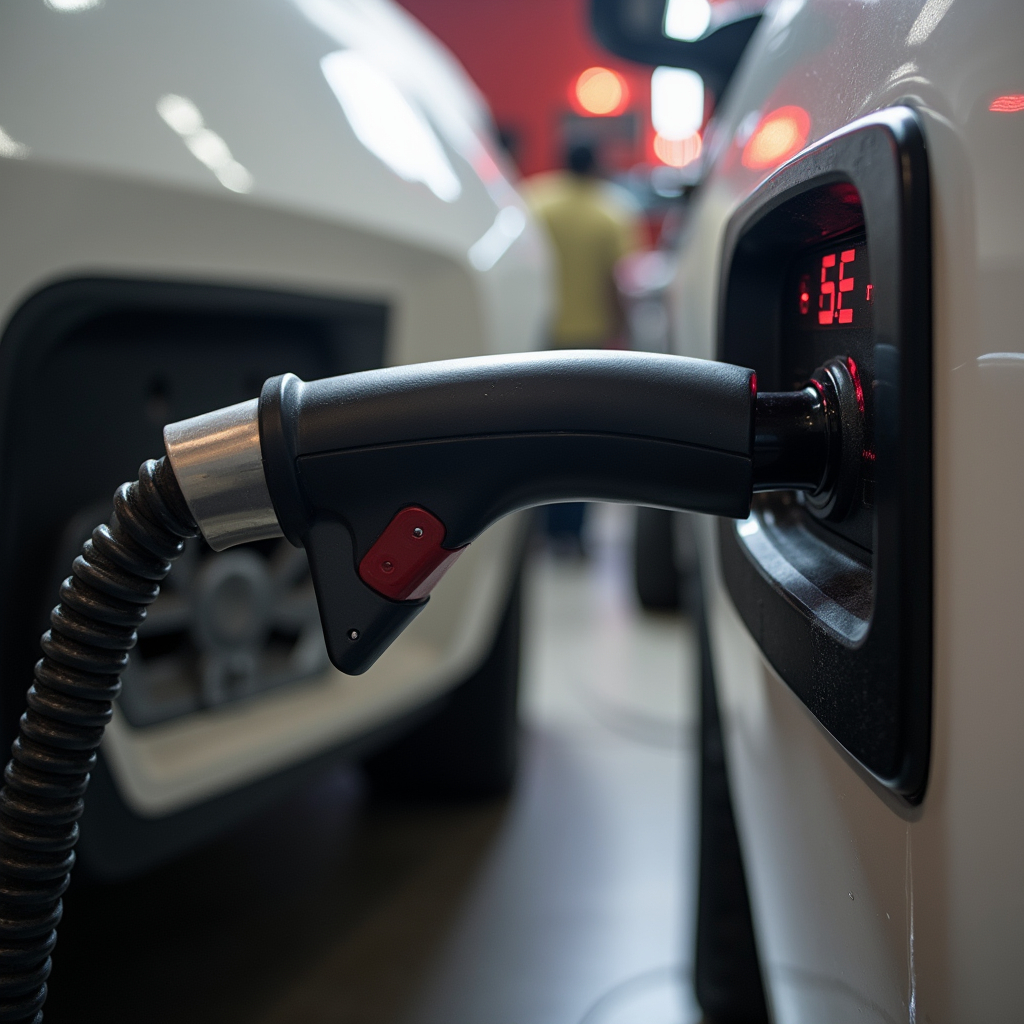
- Revision of fines
- Under the Motor Vehicles Act of 1988, there was no provision for systematically increasing fines to keep pace with inflation levels over time.
- Section 199B of the Motor Vehicles (Amendment) Act, 2019 now provides that there shall be a fixed annual increase of all fines by 10% starting from the 1st day of April each year.
- Electronic monitoring and enforcement of road safety
- Since enforcement of motor vehicles laws was under the purview of the State. Under the Motor Vehicles Act of 1988, the implementation of electronic enforcement varied amongst different states.
- Section 136A of the Motor Vehicles (Amendment) Act, 2019 assigns the responsibility to the Central Government to establish rules for electronic monitoring and enforcement of road safety. The State Governments are mandated to ensure compliance with these rules.
- National Road Safety Board
- The Motor Vehicles Act, 1988 did not include provisions for a National Road Safety Board.
- However, under Section 215B of the Motor Vehicles (Amendment) Act, 2019, a National Road Safety Board has been established. This Board is responsible for advising both the Union and State Governments on a wide range of road safety and traffic management issues. This includes setting standards for road design, vehicle maintenance, road maintenance, sustainable use of road transport, safety for vulnerable road users, road construction technology, and motor vehicle standards.
- Transport aggregators
- The Motor Vehicles Act, 1988, did not have provisions for recognizing transport aggregators such as cab service providers, etc.
- However, under Section 93 of the Motor Vehicles (Amendment) Act, 2019, statutory recognition is given to transport aggregators.
- National Transportation Policy
- There were no provisions in the Motor Vehicles Act, 1988 for developing a unified transportation policy for the country.
- Sections 66A and 66B of the Motor Vehicles (Amendment) Act, 2019 empowers the Central Government to establish a National Transportation Policy in consultation with the States.
- Penalty multiplier
- There were no provisions in the Motor Vehicles Act, 1988 for the State Governments to increase any penalties under the current regulations in force then.
- Section 210A of the Motor Vehicles (Amendment) Act, 2019 empowers the State Governments to determine a “multiplier” (ranging from one to ten) to be applied to each fine.
- Section 210B of the Motor Vehicles (Amendment) Act, 2019 stipulates that any enforcing authority under the said Act will be liable to pay twice the penalty applicable for the offence under the Act.
Central Motor Vehicles (Fifth Amendment) Rules, 2022
On April 1, 2022, the Central Motor Vehicles (Fifth Amendment) Rules, 2022, came into effect. These rules introduce a revised process aimed at promptly investigating and resolving Motor Accident Claims. They stipulate that all such claims should be investigated and adjudicated within a timeframe ranging from six months to one year. The new Rules have significantly transformed the jurisprudence of motor accident compensation by ensuring that claimants receive compensation within one year of the accident. These Rules are modelled after the framework established by the Delhi High Court in the case of Rajesh Tyagi & Ors. vs. Jaibir Singh & Ors. (2021).
The new Rules have established specific timelines for various stakeholders to expedite the settlement of Motor Accident Claims:
- The police must submit Form-I of the First Accident Report (FAR) to the Motor Accident Claims Tribunal (MACT) within 48 hours of the accident;
- The police are required to notify the victims of their rights using Form-II within 10 days of the accident;
- The driver of the vehicle involved in the incident must submit Form-III (Driver’s Form) to the police within 30 days of the accident;
- The owner of the vehicle involved in the incident must submit Form-IV (Owner’s Form) to the police within 30 days of the accident;
- Upon verifying the Driver’s and Owner’s Forms, the Police must submit the Interim Accident Report (IAR) to the MACT within 50 days of the accident;
- The victims are required to submit Form-VI and VIA (Victim’s Forms) to the Police within 60 days of the accident;
- The Police must submit Form-VII, the Detailed Accident Report (DAR), to the MACT within 90 days of the accident;
- Upon verifying Form-VI submitted by the victims, the Insurance Company must submit their response and settlement offer to the MACT within 30 days of receiving the Detailed Accident Report (DAR);
- If the Insurance Company acknowledges liability and presents a fair and acceptable compensation offer to the claimants, the Claims Tribunal will issue a Consent Award within 6 months of the accident;
- If the Insurance Company admits liability but the offered amount is deemed unfair or unacceptable by the claimants, the Claims Tribunal will conduct a hearing on the compensation amount and issue an award within 9 months of the accident;
- If the Insurance Company contests the liability, the Claims Tribunal will conduct an inquiry that must conclude within 12 months of the accident.

Conclusion
The Motor Vehicle Act aimed to provide safety to all citizens in the country, protecting them from harm and avoiding traffic congestions. This legislation requires adherence to the laws across all of India and imposes fines for any violation. Both the Motor Vehicle Act, 1988 and the Motor Vehicle (Amendment) Act, 2019 ensure the safety of vehicle owners, drivers, and all road users nationwide. The citizens are expected to adhere to these laws, which are made to promote their own safety and well-being as well as that of others. The Act promotes uniformity across the country to mitigate traffic congestion and reduce accidents. In cases where an unavoidable accident leads to death, permanent disability, or minor injury, victims and their families have the right to seek compensation from the responsible parties or drivers of the vehicle involved. Therefore, it is crucial for everyone to comply with the laws and regulations outlined in the Act to contribute to a safer and better living environment in India.
Frequently Asked Questions (FAQs)
What is the minimum age limitation criteria for obtaining a two wheeler driving licence in India?
To apply for a driving licence in India, it is important that the minimum age limitation criterion based on the type of vehicle being driven is met. For two-wheeler Licence, Section 4 of the Act of 1988 provides that a driver must be at least 16 years old for scooters under 50 cc and 18 years old for motorcycles and scooters over 50 cc. Section 7(2) of the said Act also provides that no person below the age of 18 years shall obtain a learner’s licence to drive a gearless motorcycle unless they have written consent from their guardian or caregiver.
Which form needs to be filled in case of transfer of ownership of the vehicle?
Form 29 needs to be filled in case of transfer of ownership of the vehicle.
Under which Section is it required to present the vehicle physically before registration?
Under Section 44 of the Act of 1988, it is required to present the vehicle physically before registration. It is provided that, excluding transport vehicles, before registering a motor vehicle or renewing its registration certificate, the registering authority must require the applicant to present the vehicle either before itself or before an authority designated by the State Government. It ensures that the information in the application is correct and meets the requirements of the said Act and its connected rules.
Whether the Motor Accident Claims Tribunal is a court of record ?
The Motor Accident Claims Tribunal is not a court of record. It is a Civil Court of limited jurisdiction, as held by the Hon’ble Supreme Court in Urvibem Chiragbhai Sheth vs. Vijaybhai Shambhubhai Joranputra & Ors. (2011).
Does the Motor Vehicles Act 1988 prohibit riding without a helmet?
Yes, riding without a helmet is punishable under Section 129 of the Act of 1988.
What is ‘just compensation’ for the purpose of payment to victims?
Section 168 of the Act of 1988 provides for the payment of compensation to the victims of the accident or to the legal representatives of the deceased. It provides that the payment of compensation must be ‘just compensation’. The Hon’ble Supreme Court in State of Haryana vs. Jasbir Kaur (2003) held that the expression ‘just’ denotes an equal, fair, reasonable and non-arbitrary award of compensation.
Who shall be the members of the Motor Accident Claims Tribunal?
Section 165(2) of the Act of 1988 provides that the State Government shall decide the number of members of the Claims Tribunal as it may think fit. Where there are two or more members in the Claims Tribunals, one of the members shall be appointed as the Chairman thereof.
Section 165(3) of the Act of 1988 provides that the following persons shall be qualified for appointment as members of the Claims Tribunal:
- Any serving or retired High Court Judge; or
- Any serving or retired District Court Judge; or
- Any person who is competent to be appointed as High Court Judge or as a District Court Judge.
Who is eligible to claim compensation under the Motor Accident Claims Tribunal ?
Section 165 of the Act of 1988 provides that the Motor Accident Claims Tribunal adjudicate upon claims for compensation in respect of accidents involving:
- Death or bodily injury caused to the person; or
- Damage to any property of a third party; or
- Both.
How shall the award of interest be calculated in relation to the amount of compensation ?
Section 171 of the Act of 1988 provides that where any court or Motor Accidents Claim Tribunal allows a claim for compensation, such Court or Tribunal may direct that, in addition to the amount of compensation, simple interest shall be payable from such date, not earlier than the date of making the claim, as it may specify on this behalf.
What are the penalties for participating in a motor vehicle race or speed trial on a public road without the State Government’s consent ?
Section 189 of the Act of 1988 provides that any person who, without the written consent of the State Government, permits or participates in a race or speed trial of any kind between motor vehicles in any public place shall be punished with an imprisonment for a term of up to three months, a fine of Rupees Five Thousand, or both. For a subsequent offence for the same offence, the punishment shall be imprisonment for a term of up to one year, a fine of Rupees Ten Thousand, or both.
References
- https://www.legitquest.com/legal-guide/the-motor-vehicle-act-1988
- https://www.business-standard.com/about/what-is-motor-vehicles-act
- https://www.godigit.com/traffic-rules/motor-vehicle-act#amp_tf=From%20%251%24s&aoh=16539131811291&referrer=https%3A%2F%2Fwww.google.com&share=https%3A%2F%2Fwww.godigit.com%2Ftraffic-rules%2Fmotor-vehicle-act
- https://www.bankbazaar.com/driving-licence/motor-vehicles-act.html
- https://blog.finology.in/Legal-news/The-Motor-Vehicles-Act-1988#:~:text=The%20Motor%20Vehicles%20Act%2C%201988%20has%20been%20described%20to%20be,keep%20it%20up%20to%20date
- https://www.business-standard.com/about/what-is-motor-vehicles-act
- https://vidhinama.com/case-analysis-kirti-v-oriental-insurance-co-ltd-2021-2-scc-166/
- https://www.researchgate.net/profile/Dr-Singh-144/publication/375601304_Road_safety_measures_and_the_development_of_Motor_Vehicle_law_in_India_-A_Descriptive_Analysis/links/655220d1ce88b87031e51e8f/Road-safety-measures-and-the-development-of-Motor-Vehicle-law-in-India-A-Descriptive-Analysis.pdf
- https://www.caclubindia.com/articles/motor-vehicle-amendment-act-2019-48178.asp
- https://testbook.com/ias-preparation/road-safety-and-motor-vehicles-amendment-bill-upsc-notes
 Serato DJ Crack 2025Serato DJ PRO Crack
Serato DJ Crack 2025Serato DJ PRO Crack


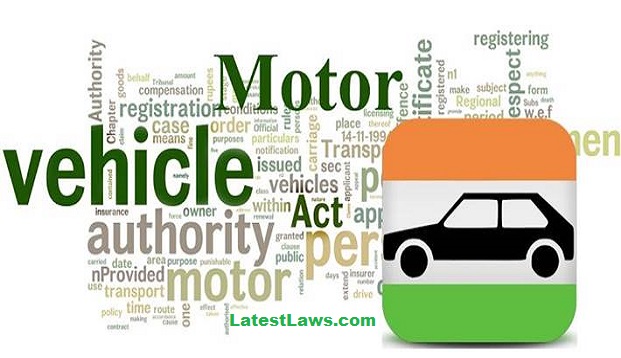



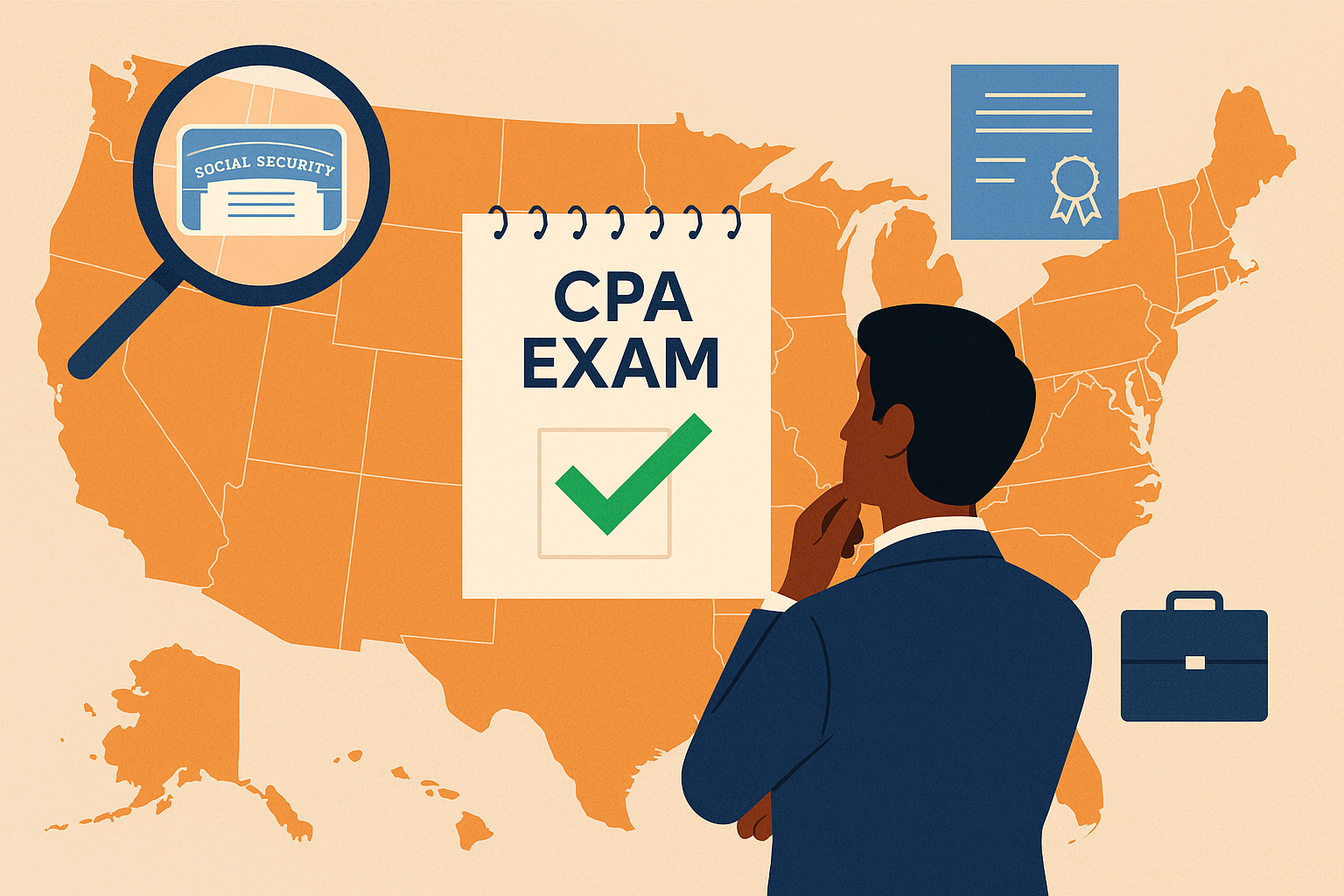



 Allow notifications
Allow notifications



